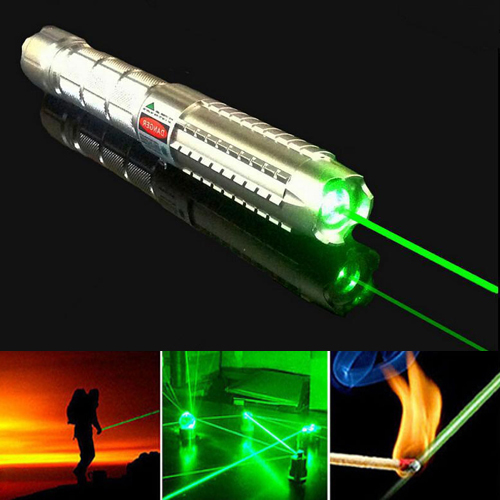Early high power laser pointer used helium-neon (HeNe) gas lasers with a wavelength of 633 nanometers (nm), which were usually used to generate laser beams with an energy of no more than 1 milliwatt. The cheapest laser pointer uses a red laser diode with a wavelength close to 670/650nm. The more expensive ones use 635nm red-orange diodes, which are easier to recognize by the human eye. There are also laser pointers of other colors, the most common is green light with a wavelength of 532nm. In recent years, 593.5nm yellow-orange laser pointers have also begun to appear. In September 2005, a 473nm blue laser pointer appeared. At the beginning of 2010 [2] a blue laser pointer with a wavelength of 405nm (actually purple light) appeared. From 2012 to 2013, with the introduction of 510/520nm laser diodes, blue-green laser pointers with wavelengths of 510~520nm began to appear.
The red laser pointer has the simplest structure due to the laser diode that generates this wavelength, basically it is only a diode with a battery as the energy source. The red laser pointer first appeared in the 1980s and is a large and heavy device worth hundreds of dollars [3]; now it is very small and very cheap. In recent years, a diode-pumped solid-state laser (DPSS) red laser pointer with a wavelength of 671 nm has appeared. Although this wavelength can be obtained with cheap diodes (650nm red laser used in DVD players), DPSS technology can produce lasers with higher quality and narrower frequency bands.
Yellow laser pointer, a yellow laser pointer with a wavelength of 593.5nm appeared on the market recently. Based on DPSS technology, two laser beams with wavelengths of 1064nm and 1342nm are added through a nonlinear crystal. The complexity of this process makes the yellow laser pointer unstable and low efficiency. The output power is 1-10 milliwatts with temperature changes. If it is overheated or overcooled, there will be a mode jump. This is because the size of the laser pointer does not provide the required temperature stabilization and cooling components. In addition, most 593.5nm laser pointers work in pulse mode in order to use pump diodes with smaller size and power.

